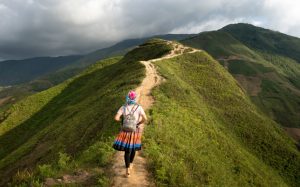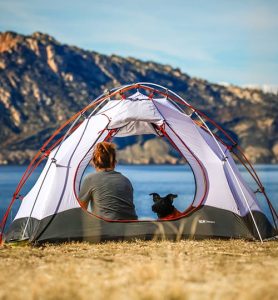BLOG ARTICLES

TOP 5 US
NATIONAL PARKS
National parks are some of the most beautiful and awe-inspiring places in the world. Each park has its own unique features and attractions that draw visitors from all over the globe. In this blog post, we’ll highlight the top 5 national parks in the United States and suggest some of the must-see things to do in each park.
Yellowstone National Park
Yellowstone National Park is a geological wonderland located primarily in Wyoming, with small parts of the park extending into Montana and Idaho. The park is home to more than 10,000 thermal features, including the famous Old Faithful geyser. Visitors can also explore Yellowstone’s many hiking trails, fishing streams, and wildlife sightings. Some of the top things to do in Yellowstone National Park include visiting the Grand Prismatic Spring, hiking to the top of Mount Washburn, and observing the park’s abundant wildlife, including bison, elk, and grizzly bears.
Grand Canyon National Park
The Grand Canyon is one of the most recognizable landmarks in the world, and Grand Canyon National Park offers visitors a chance to experience the canyon’s grandeur up close. The park, located in Arizona, offers many activities, including hiking, camping, and rafting. Visitors can hike down into the canyon on one of the park’s many trails, take a scenic drive along the rim, or even take a helicopter tour for a bird’s eye view of the canyon. Other popular activities in the park include visiting the historic Grand Canyon Village and exploring the South Rim Visitor Center.
Zion National Park
Zion National Park is a stunningly beautiful park located in Utah. The park is known for its towering red rock formations, deep canyons, and rushing rivers. Visitors can explore the park’s many hiking trails, including the famous Angels Landing hike, which offers stunning views of the surrounding canyon. Other popular activities in the park include rock climbing, canyoneering, and mountain biking. Visitors can also take a scenic drive along the Zion-Mount Carmel Highway or explore the park’s many waterfalls, including the popular Weeping Rock.
Yosemite National Park
Yosemite National Park, located in California, is known for its towering granite cliffs, cascading waterfalls, and giant sequoia trees. The park offers many activities, including hiking, camping, rock climbing, and wildlife watching. Visitors can explore the park’s many hiking trails, including the popular Mist Trail, which takes visitors to the base of the park’s most famous waterfall, Yosemite Falls. Other popular activities in the park include visiting the Mariposa Grove of Giant Sequoias, exploring the Yosemite Valley, and taking a scenic drive along the Tioga Road.
Acadia National Park
Acadia National Park is located in Maine and is known for its rugged coastline, forested islands, and granite peaks. The park offers many activities, including hiking, camping, and wildlife watching. Visitors can explore the park’s many hiking trails, including the popular Precipice Trail, which takes visitors to the top of Cadillac Mountain. Other popular activities in the park include visiting the Bass Harbor Head Lighthouse, taking a scenic drive along the Park Loop Road, and exploring the picturesque seaside village of Bar Harbor.
The United States is home to some of the most beautiful and awe-inspiring national parks, and activities. Whether you love hiking, wildlife viewing, or simply taking in the natural beauty, there is a national park for everyone. So, pack your bags and get ready to explore the great outdoors!

BOONDOCK CAMPING
LIVING OFF-GRID
Boondock camping, also known as dispersed camping, dry camping or off-grid camping, is a popular and adventurous way to explore the great outdoors. It involves camping where you are in a remote location without any access to facilities such as to water, electricity, or sewer systems. Instead, you must rely on your own resources to survive. This means that you will need to be self-sufficient and have a plan in place for water, power, and waste management.
Boondock camping offers several advantages over traditional campgrounds. For one, it provides a more secluded and natural experience, allowing campers to truly connect with the surrounding environment. It also offers more flexibility in terms of location, as campers are not limited to designated camping areas.
However, boondock camping also comes with some challenges. Without access to facilities, campers must be prepared to handle their own waste disposal and water management. They must also be self-sufficient in terms of food and supplies, as there are no nearby stores or restaurants.
To ensure a successful boondock camping experience, it’s important to do your research ahead of time. Check local regulations and permits, plan your route and supplies, and be aware of potential hazards such as wildlife and weather conditions. Also, let others know what area you are in in case the need should arise.
Here is a list of things you need to consider when planning a boondock camping trip:
Water supply: Since there are no water hookups available, you need to bring your own water supply. The amount of water you need will depend on the length of your trip and the number of people in your group. You can bring water in jugs or containers, or you can use a water filtration system to collect and purify water from nearby streams or lakes.
Power source: Since there are no electrical hookups available, you need to have a reliable power source. You can use a generator, solar panels, or a battery bank to power your camping gear, such as lights, fans, and electronics. Make sure you have enough power to last throughout your trip.
Waste disposal: You need to have a plan for waste disposal since there are no sewer hookups available. You can use a portable toilet, composting toilet, or bury your waste in a hole at least six inches deep. Make sure you follow the Leave No Trace principles and dispose of your waste properly.
Food and cooking: You need to bring enough food and cooking supplies for your trip. You can use a propane stove, charcoal grill, or campfire to cook your meals. Make sure you store your food properly to prevent attracting wildlife.
Shelter: You need to have a tent or RV to sleep in. Make sure your shelter is suitable for the environment and weather conditions you will be camping in.
Navigation: Since you will be camping in remote areas, you need to have a good map and compass or GPS to navigate. Make sure you know the area and have a plan in case of an emergency.
Safety: You need to be aware of the risks and hazards of boondock camping. You may encounter wildlife, extreme weather conditions, or rough terrain. Make sure you have a first aid kit, emergency supplies, and a way to communicate with others in case of an emergency.
Research the area: Before you go boondock camping, research the area you will be camping in. Make sure you know the rules and regulations, such as permits and fire restrictions. Check the weather forecast and plan accordingly.
Plan your route: Plan your route and know the roads and terrain you will be traveling on. Make sure your vehicle is suitable for the terrain and has enough fuel to get you to your destination.
Pack light: Since you will be carrying your own water and power supply, make sure you pack light. Only bring what you need and leave unnecessary items at home.
Follow Leave No Trace principles: Boondock camping requires you to leave no trace behind. Make sure you pack out all your trash and dispose of your waste properly.
Be respectful of wildlife: Boondock camping allows you to get closer to nature, but you need to be respectful of wildlife. Do not feed or approach wildlife and store your food properly to prevent attracting animals.
Boondock camping can be a rewarding and memorable experience for those who are up for the challenge. It offers a unique opportunity to disconnect from modern technology and experience nature in a more primitive and secluded setting. Just remember to plan ahead, pack appropriately, and leave no trace behind to ensure a safe and enjoyable experience for yourself and others.
